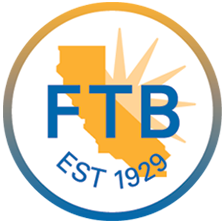
Business growth is a good thing when you are prepared for it, and it’s actually part of owning a business. If you’re not prepared for expansion, the cost of hiring new employees can catch you by surprise. Particularly, if you are unfamiliar with the process.
By being aware of routine hiring expenses, including time and money, your business can more easily absorb the cost. A common task regarding cost of hiring is ensuring new employees generates a healthy profit and a return on investment.
When Is It Time To Hire New Employees?
It’s important to understand your needs and act in a timely manner if you suspect that you need to hire another employee. While the CEO may find it challenging to keep pace with staff, department heads should know when workload exceeds staff.
And, if you don’t hire in a timely manner, the work will begin to outpace your staff. But hiring too early, and you may jeopardize your cash flow, putting the new employee and your business at risk.
There are key factors that dictate when it’s time to hire a new employee. For example, do you find yourself saying ‘no’ to new business? Is customer service starting to slip? Do employees feel overwhelmed, leading to increased absenteeism or employee sick days?
These are just some of the signs that it’s time to hire new employees.
The Cost Of Different Types Workers
Oftentimes, independent contractors or part-time professionals are less expensive than full-time workers. This is due to the overheads and benefits bundled with the full-time person’s salary. For small businesses, the cost of hiring a freelance worker, or new part-time employees might be a more attractive option.
To break it down, below are the different types of workers and the expenses associated with them.
- Freelancer. In general, freelancers are commonly the most cost-effective, as you don’t incur any of the expenses reserved for full-time and part-time employees. Since they are usually classified as self-employed, they are responsible for paying income and self-employment taxes.
- Temporary Worker. A temp is entitled to overtime pay and workers’ compensation but is generally excluded from insurance and benefits.
- Part-Time Employee. Part-time employees commonly don’t receive health insurance or paid time off, and are usually excluded from participating in retirement plans.
- Full-Time Employee. An employee pays the base salary and covers benefits like paid sick leave, bonuses, health insurance, retirement, and vacation days.
When deciding which role to recruit, consider the industry you’re in and the type of resources you require. Another factor that can guide this decision is consider your willingness and ability to absorb labor into your business.
What Is The Cost Of Hiring New Employees?
The cost of hiring new employees varies based on your company’s location and the industry you’re in. However, if you have all the equipment and supplies for a new employee, you could spend as little as $2,500. But most companies can expect to pay between $4,500 and $25,000 to hire a new employee, not including benefits and salary. For these reasons, it’s crucial that you take time during the hiring process to ensure the new employee is a good fit for your company and the position.
You may also enjoy reading: Does A Mortgage Loan Modification Affect Your Credit Scores?





